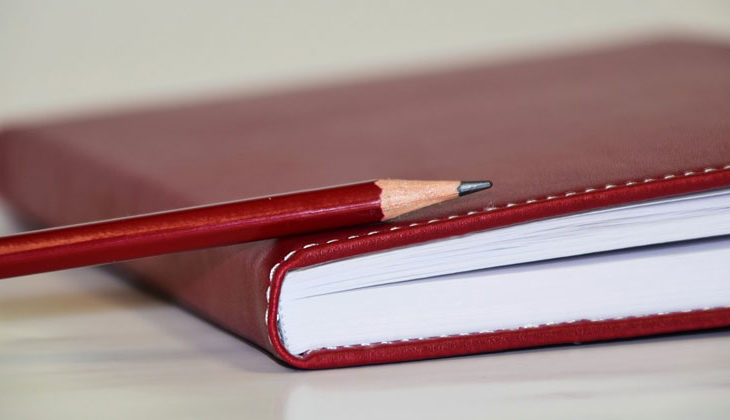
As the saying goes, “nothing is perfect in life”, so is the writing skills of the author. There are no authors on this globe who can write without any mistakes, even when the writing medium has options of spell check and grammar mistakes. This simply happens because of the constant change of ideas while trying to narrate a piece of work while writing it down. Although the authors themselves go through their work to correct their mistakes or to reframe the thought process to make reading as error-free as possible. But for no human being, it is possible to draft error-free writing work or reading, drawing, sketching, etc in that matter. So, how do we get a book which is error-free? Well, the answer lies in copyediting and proofreading. These two methods bring an error-free product to the shelves or screen of the reader. Though for a layman both sound similar but in this article, we will discuss Copyediting Vs Proofreading. Without these two methods any written work in any format paperback, hardcover or digital is just a raw product with mistakes. Such products don’t have any space in the commercial market besides the author’s own table. Before we go further in details of the copyediting vs proofreading process it is important to first learn the basics of these fields.
What is copyediting?
For a layman a copy editor seems to be a spelling checker. But that’s not the truth in fact a copyeditor is writers/authors best mate, as he/she helps in correcting the inconsistencies, mistakes both grammatical and vocabulary related with keeping a check on the repetitions also. Like some writers have a fascination and habit of using some words too oftenly. So, in such a case, to make the text more enjoyable and captivating while reading, the role of copy editor becomes crucial.
Role of a copyeditor involves:
1. A copyeditor checks for and corrects inaccuracies in grammar, spellings, syntax, fonts and punctuations.
2. He/She checks for technical aspects of writing like consistency in spellings, as we know a word can be spelled differently in different languages, for e.g. color (in US English) or “Colour” (in British English), then capitalization, font usage, numbers, hyphenation.
3. Another important thing a copyeditor has to do is to check the work for factually incorrect statements. This is very important in non-fictional genres like historical books, scientific journals, social books, political books etc. So, the copy editor must check the data, dates, time, names of famous personalities or historians or political figures in order to put the correct information out to the readers.
4. The copy editor must also look into the legal aspects of the writing too. he/she has to verify that your work is under the rules and regulations of the nation it belongs to.
5. A copy editor also has to remember the details of the author’s previous work too, especially in sequels of the books. So that the characters and the description of the plot is consistent in the same volume and other volumes too.
So, a copyeditor is someone who is proficient, skillful, resourceful, and expert in his work in order to bring the best version of the author’s work to you.

How a copyeditor works:
The work of copy editing is executed before the production of the book at the publishing houses. Most of the publishing houses hire the copy editor or in some cases, the author also co-works as or with the copy editor.
So, the following sequence is followed for copyediting:
Manuscript Critique: It can be defined as a large canvas after an initial reading of the written work of the author called draft by the author. During this process, a copyeditor reads the draft and sketches out an initial extensive layout for the comprehensive assessment. Now at this point, the draft is referred to as a manuscript. But many people refer to the draft as a manuscript too from the initial stages too.
Comprehensive Editing: This is the main arena where the war against unwanted words takes place and the sword lies in the hand of the copyeditor. The copyeditor’s work is the most substantial in this phase, after this the manuscript will be sent for proofreading and finally the printing of the book will take place. We can easily say that this stage is the stage of the “blueprint” of the book or the “embryonic” stage.
What is proofreading?
Proofreading occurs under the publishing houses and in proofreading the final copy of the manuscript undergoes the lens of the professional proofreader. The main aspect and work of the proofreader is to check the quality of the manuscript which is edited by the copyeditor, before it can go into mass production as a book.

So, many people will think that the job of the copyeditor and the proofreading is the same. But, the answer is No, a copy editor basically edits the draft written by the author. Whereas proofreader checks if the work of the copyeditor is upto the mark or not and if the manuscript is not upto the mark. Then a proofreader returns the manuscript back to the copy editor and/or the author. So basically a proofreader decides whether the manuscript will be a book or not.
Difference between copyediting and proofreading
At first instance, there seems to be not much difference in the copyediting and proofreading as such. But when studied both are different. Also, there has been a constant discussion that who is more crucial when it comes to copyediting vs proofreading? We have listed some points for you which will help in understanding the difference between the two, they are as follows:
1. Proofreading involves an examination of the document to check for spelling mistakes, grammatical mistakes, incorrect punctuations, text style mistakes like font, italics, spacing, underscore, etc. But copyediting is more detailed work and involves these aspects along with the structuring of the lines and paragraphs in order to make the text free-flowing and enjoyable while reading it. So, basically proofreading is more technical work whereas copyediting is both technical and creative work.
2. Proofreading is only possible once the copy editor has gone through the written draft of the author . So, basically proofreading is an added layer of filtration for correcting the manuscript before it converts into a book.
Suggested Read – What Makes A Book Worth Reading?
3. Proofreader is not responsible for the quality of the content of the book whereas a copyeditor has the ability to bring changes in the content to make it more interesting for the readers with his/her input.
So in very basic words if we have to say that the difference between a copy editor and a proofreader is that: A copy editor revises the work of the author and a proofreader corrects the work of the copyeditor. So, in the fight between copyediting vs proofreading, both are actual winners as both plays an important role in bringing out the best version of the draft written by the author. Both are crucial for an error-free final product called the book which a reader enjoys without any hiccups.

Related Post

Igniting Author Success: How Your
Behind every successful author is a team of dedicated professionals




